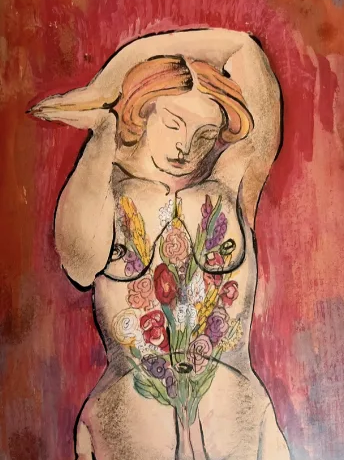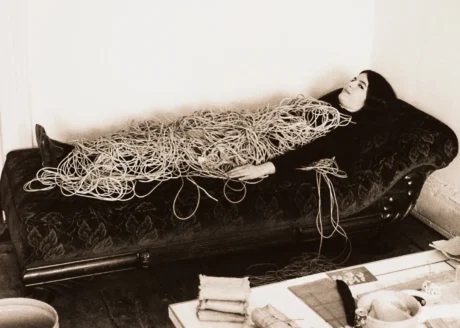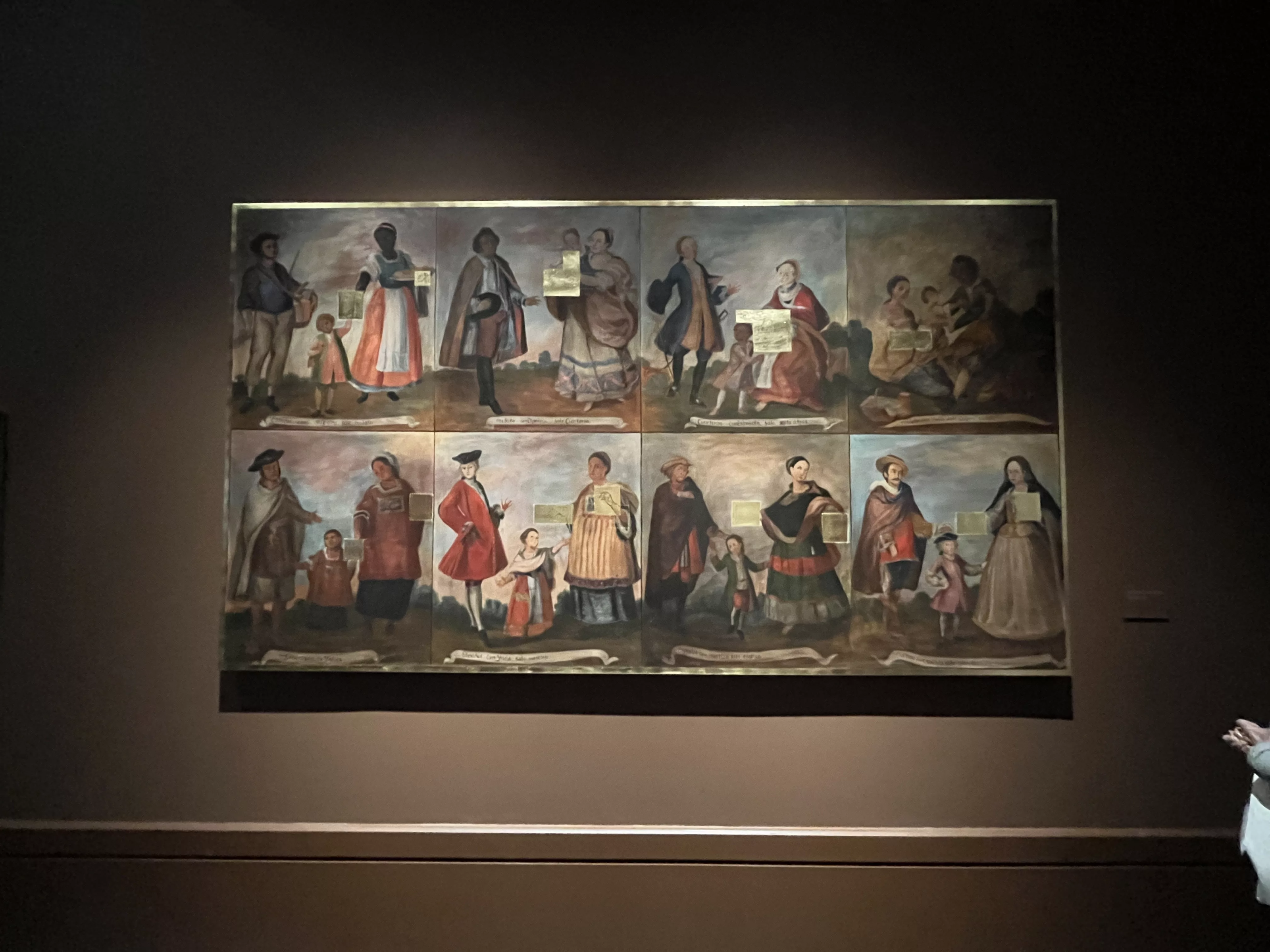
Can you decolonise a museum? Or is the museum itself such a fundamental tool of the coloniser that it can never truly be anything else? The project of decolonising and the legacies of colonialism woven through the Western art world sit at the heart of this year’s Venice Biennale. The theme of the International Exhibition, curated by Adriano Pedrosa, is ‘Foreigners Everywhere,’ and visions of otherness and different conceptions of national identity pervade the national pavilions, too. More indigenous artists than ever before have been chosen to represent national pavilions, including Jeffrey Gibson at the American pavilion, Archie Moore at the Australian pavilion (winner of the Golden Lion Award for best pavilion), and Inuuteq Storch at the Danish Pavilion. The fragility of modern nations was on full display via the last-minute decision of Ruth Patir to close her exhibition at the Israeli pavilion until ’a ceasefire and hostage release agreement is reached,’ the absence of Russia, and the presence of Ukrainian artists in the Polish pavilion.
The pavilion structure of the Venice Biennale is unique. It provides a confined, specific space for artists to realise a full installation, and of course, it defines artists by their nationality. The work is not just on the walls, it is experiential. Lately, this has lent itself to art that is obviously an installation – video and multimedia work, like John Akomfrah’s immersive work at the British pavilion this year or the trippy floating sculptures by Julien Cruezet in the French pavilion or the really excellent and raw reimagining of a remote village festival by Xirómero/Dryland in the Greek pavilion. These pavilions are instantly read and felt as ‘installations.’
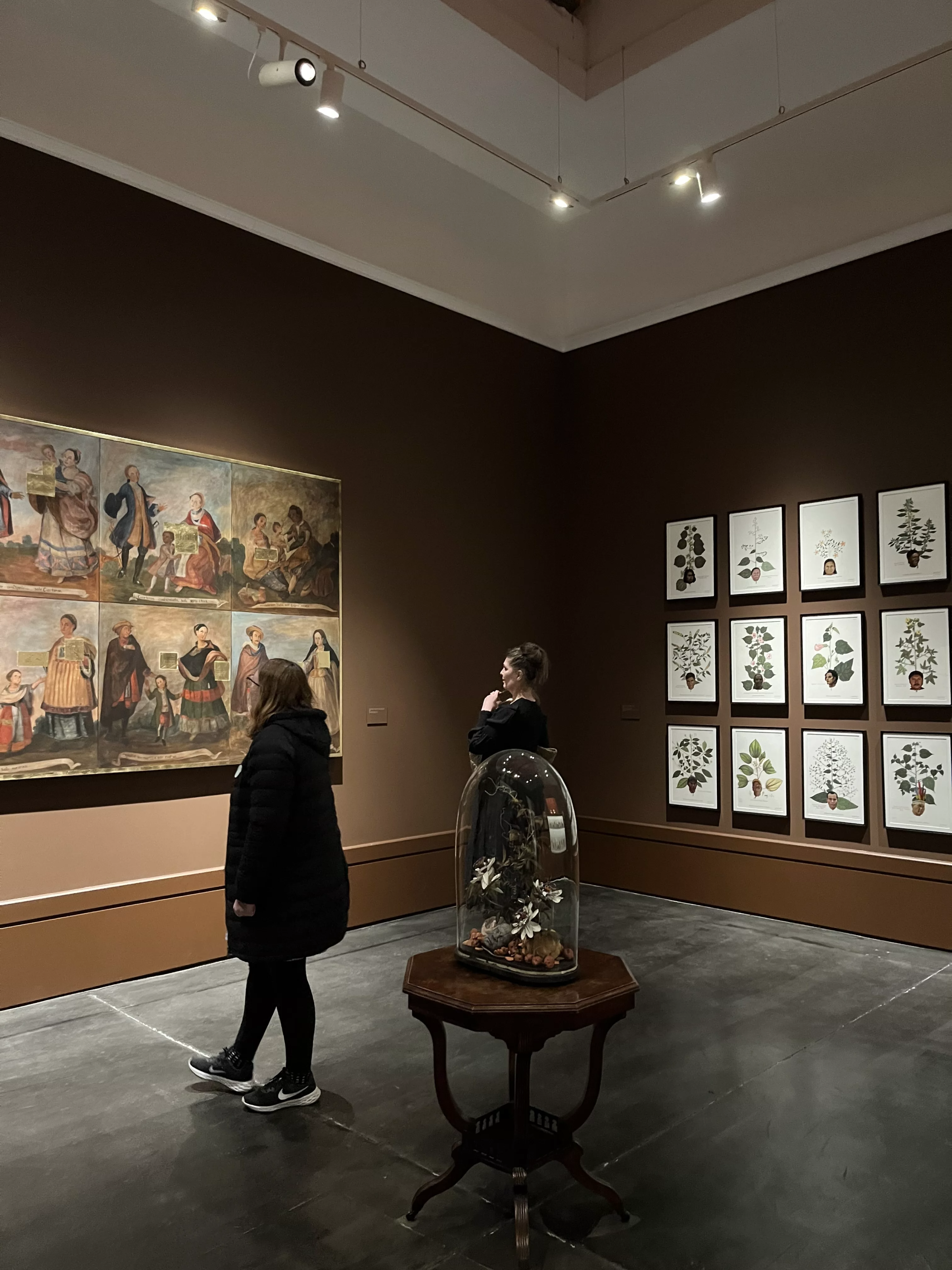
The Spanish pavilion is equally envisioned as an immersive environment, but it seeks to twist familiar, traditional language to discomfit the viewer rather than creating something jarringly new. Conceived by artist Sandra Gamarra Heshiki and curator Augustín Pérez Rubio, the ‘Pinacoteca Migrante,’ or ‘Migrant Art Gallery,’ is designed as a traditional Western art museum, complete with dark red and green walls, spotlights on the paintings lining them, and that sense of quietness and formality that pervades museum galleries. Gamarra’s work uses the traditional language of Western art – figurative painting – to reinterpret canonical works from Spanish museum collections through a decolonial lens. She was born and raised in Peru and is the first person from one of Spain’s former colonies to represent the country at the Biennale.
Many of Gamarra’s paintings are inscribed with text in English or Spanish that guides the narrative of the work. On one, she wrote that museums are built ‘to be the institutions where Western memory is honoured and displayed, where European modernity conserves its tradition (the colonisation of time) and – on the other hand – to be the institutions in which the difference of non-European traditions is recognised.’ Unlike a lot of politically-minded contemporary art, these works literally say what they mean. It’s almost too on the nose, but I found it refreshingly direct.
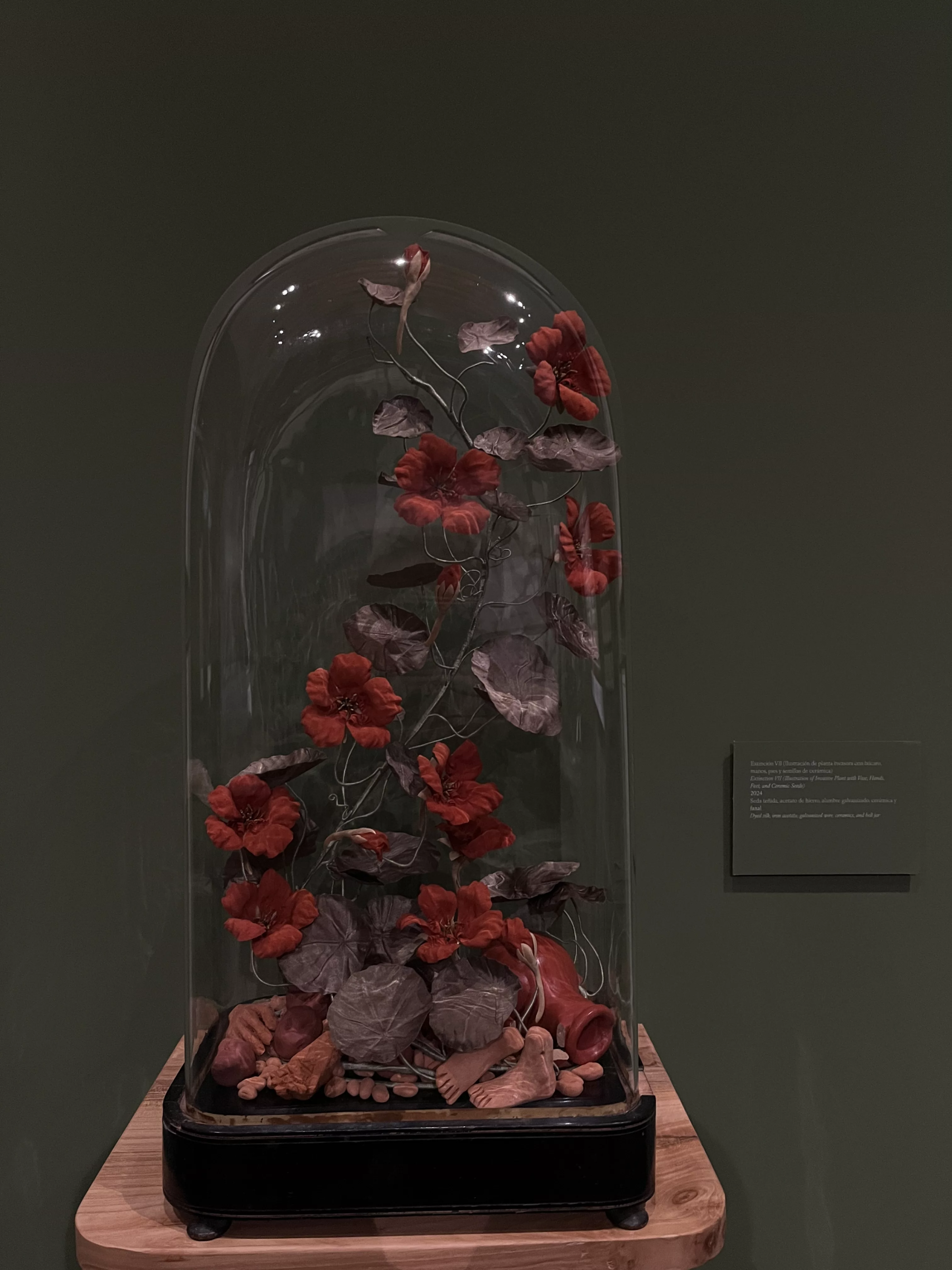
The main theme of the first two rooms, titled Virgin Land and Cabinet of Extinction, is environmental colonialism in the so-called New World. The opening wall text states that European colonisation of the Americas created a ‘violent way of inhabiting the earth.’ Gamarra’s paintings layer scenes of garbage on top of pristine landscapes, with borders that look like maps, explicitly articulating the changing character of South American land over time. She uses nineteenth-century-style glass cases to display botanical images, calling it the ‘cabinet of extinction.’ The ways in which biological material has been violated and transported around the world have led to the contemporary climate crisis, and have their roots in European colonialism.
The other rooms in the pavilion deal directly with racism, particularly with European colonists obsessive fear of miscegenation, or interracial marriage. The most powerful piece is the Dying Life Altarpiece, a huge polyptych work painted in shades of red and covered in gold-leaf. Like all the works, it overtly takes the language of European art, in this case, Renaissance altarpieces, and uses it to make a point about the complicity of art in colonialism.
When I asked Gamarra and Rubio if the museum can ever been decolonised, they smiled. The question is so big, and so commonly asked, that it has begun to feel almost trite. ‘We don’t have to decolonise museums, we have to decolonise our minds and our bodies,’ Rubio told me. The purpose of this work isn’t to offer a new vision of museums, it is to reprogram the museum-goer to see the space for what it is. Does that mean that the museum cannot be decolonised, and our only hope is to decolonise the viewer?
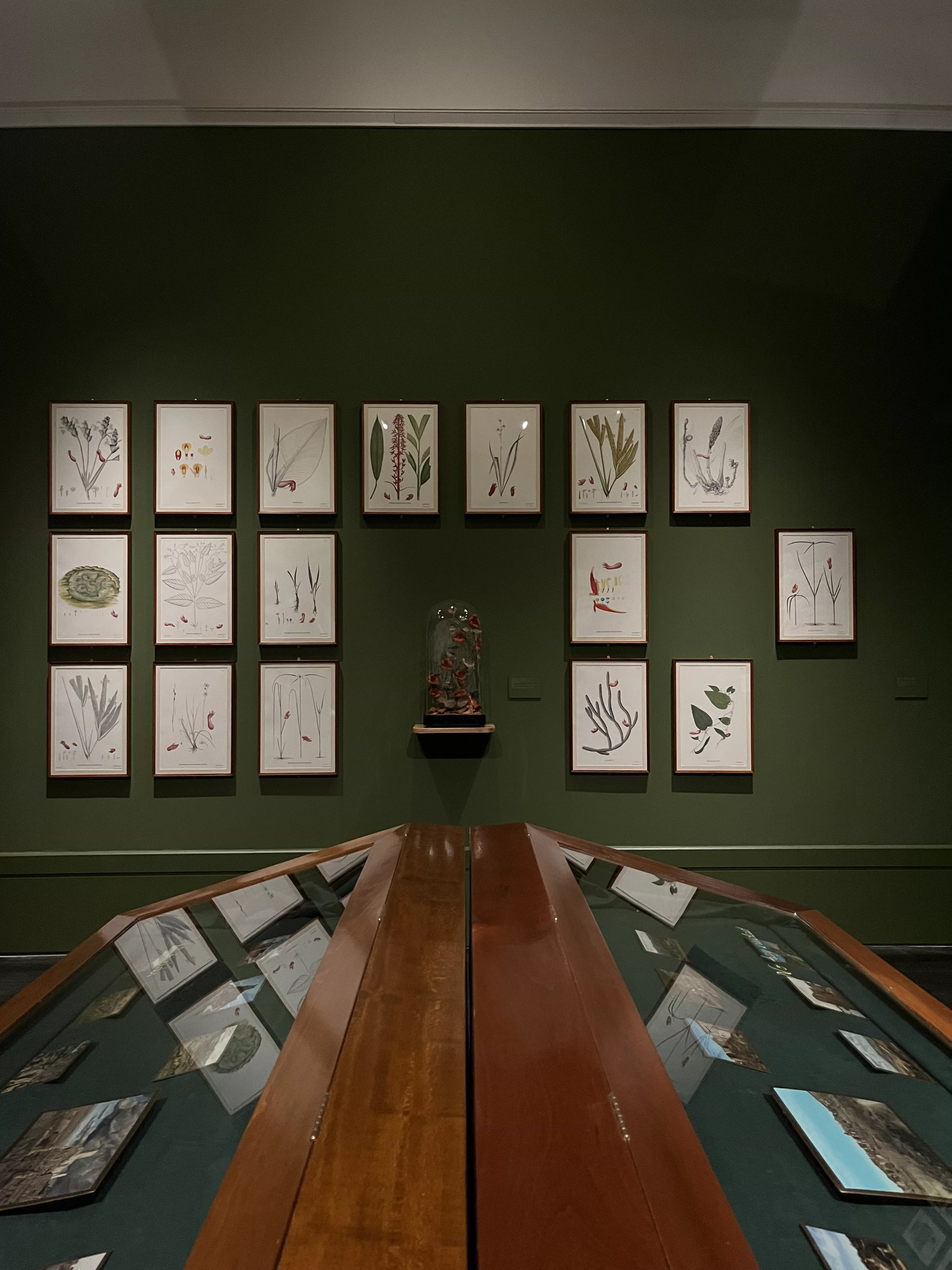
‘This is the creation of truth,’ Gamarra told me. Museums define cultural and political hegemony by preserving the things that become marked as masterpieces or history by being in a museum, and we are taught not to question them. The closed circuit of power is undisrupted. Gamarra is trying to change that. ‘I love painting, and I am a Western painter,’ she says, ‘and I think maybe through painting we can disconnect and make it literally short circuit.’ For all the marketing around Gamarra’s identity as ‘non-Spanish-born,’ it is striking that she identifies as a Western painter in the same traditions as those she is trying to subvert or short circuit. She described growing up in Peru as an experience so steeped in the culture of Spain that it was difficult to parse what was European and what wasn’t. She has lived in Spain for decades and now occupies a liminal space between national identities that is made more complicated by the historical power dynamic between Spain and its former colonies.
As I walked around the pavilion, I thought of Audre Lorde’s famous declaration that ‘the master’s tools will never dismantle the master’s house.’ This conceptialisation of the path to change is based on the basic assumption that the tools of the powerful can never truly be used against them. Gamarra and Rubio do not agree – and they recognise themselves as inside the master’s house, not outside it, and therefore even more responsible for dismantling it. ‘The idea is that you have a space that you recognise and your body recognise as a place where you’re going to learn history,’ Augustín said, referring to museums. But in the Migrant Art Gallery, it is a false recognition, meant to jolt the viewer out of complacency and into critical thinking.
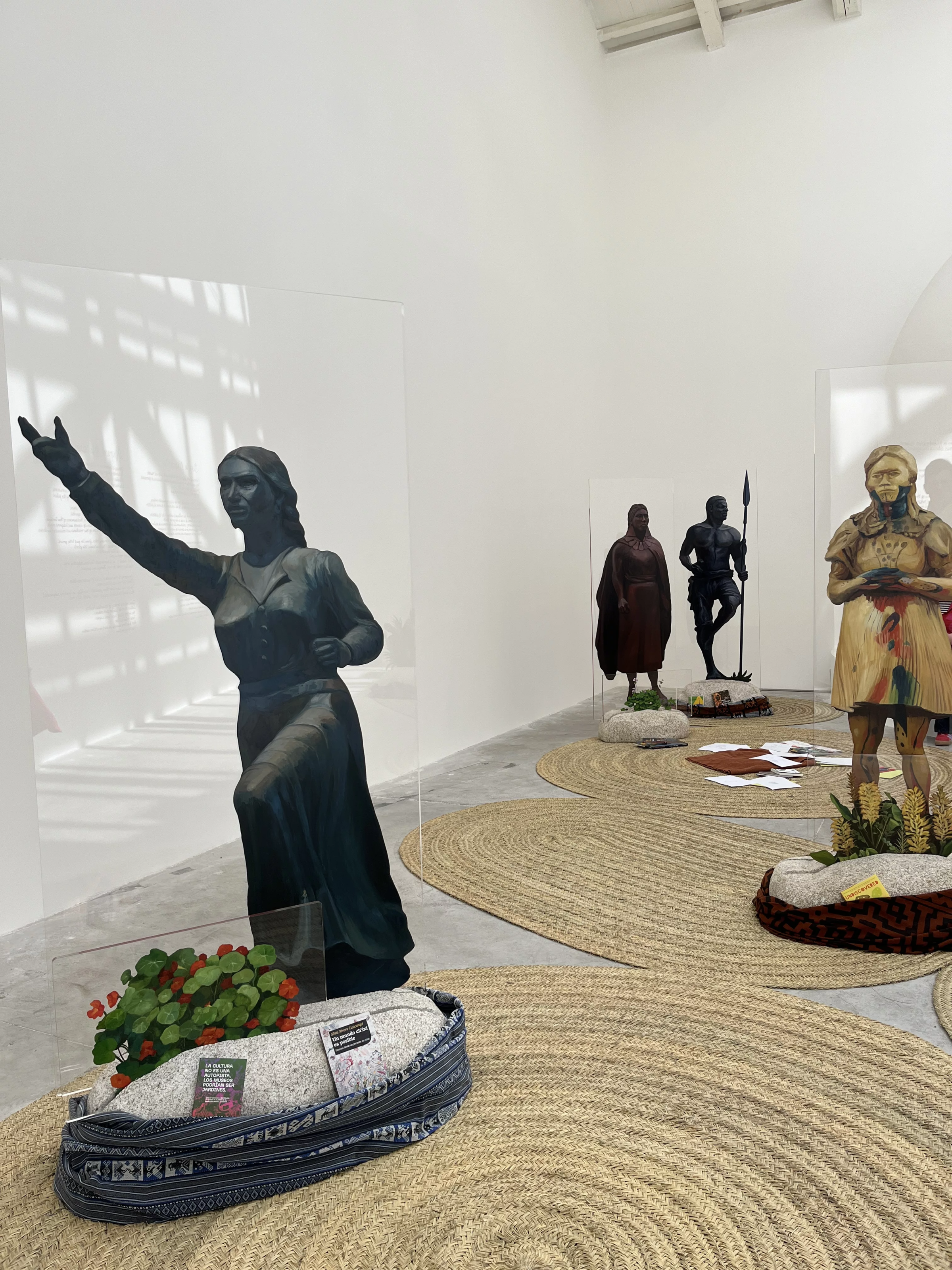
I have been teased by my fellow art writers for saying I find the choices made by a curator more interesting than the choices of the artist, but in the case of the Migrant Art Gallery, the two are difficult to separate. Rubio’s curatorial vision is a work of art as much as Gamarra’s paintings on the wall are, and the erudite texts on the wall of each room are the foundational concepts of the installation. I love this level of intellectual guidance as a viewer, but I am an art historian – will most visitors be as keen to stop and read?
This kind of decolonial curating is much less sexy than, say, Jeffrey Gibson’s gaudy and joyful Native American works in the America pavilion, which celebrate the survival of his culture in the face of repression. Rubio and Gamarra’s work is quieter and much more nuanced. It asks the viewer to be accountable for their own complicity in historical violence rather than offering a fresh alternative to be taken up without guilt. For Gamarra and Rubio, there is no way forward in the art world without justice and accountability. We cannot simply become inclusive, accessible, diverse, or any other buzzword without reckoning with why we were not.
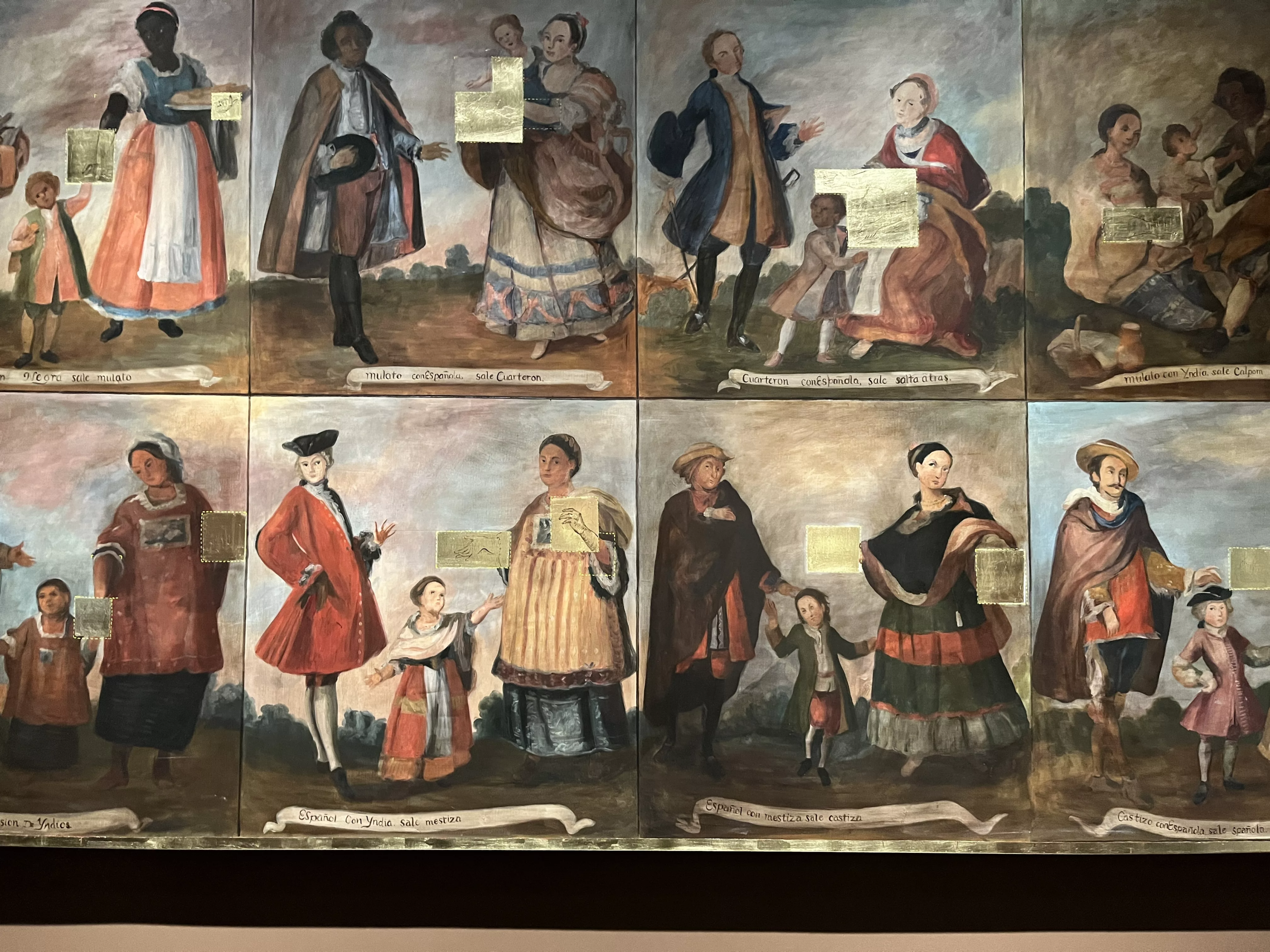
In the sea of collectors and bigwigs roaming the Giardini, the Migrant Art Gallery holds space for contemplation of the way art’s power reaches far beyond the ‘art world.’ It is a reminder that the museum is not a passive, static space but rather a continuous practice of constructing memory and power. Seeking justice in this space is a recognition of the way most people actually experience art. The visitors streaming through the Prado vastly outnumber those who will encounter trippy multimedia works in contemporary art galleries. Changing our minds and our bodies as they move through those temples to European culture, as Rubio puts it, is an effort to reach the masses.
But I am still wondering about the role of the master’s tools in dismantling this most symbolic of master’s houses. Can we ever go far enough by working from inside the language of power? I’m not sure, but I also don’t think we can go anywhere at all without facing the violent legacies we have inherited. The Migrant Art Gallery is a beautiful project, and while it is in many ways a melancholy experience, it ends with hope. In the courtyard in the centre of the pavilion stand life-size painted figures of ‘lost voices,’ people who fought for independence and liberation in colonised South America, surrounded by empty white walls. A poem painted on the wall reads, ‘Before filling these walls again, take the time to listen.’
Written by Eliza Goodpasture



